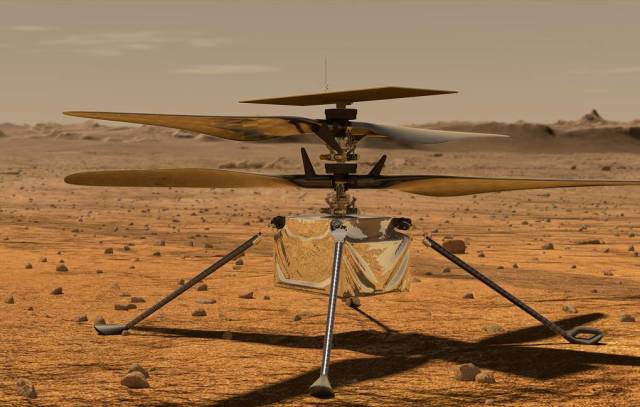Chief developer of Ingenuity Bob Balaram noted that the flight is likely to take place "not earlier than April 8"
NEW YORK, March 23. /TASS/. Specialists of the US National Aeronautics and Space Administration (NASA) intend to conduct the first tests of the Ingenuity helicopter ("Ingenuity"), attached to the Perseverance rover ("Perseverance"), in early April. This was announced on Tuesday at a press conference in the US Space Agency.
Ingenuity chief developer Bob Balaram noted that the flight is likely to take place "not earlier than April 8." He admitted that these deadlines "may be postponed for several days" earlier or later. The specialist stated that the device is quite fragile. In the event of a fall, it may be damaged, which will cause it to malfunction.
The head of NASA's planetary science division, Lori Glaze, stressed at a press conference that Ingenuity, which weighs about 1.8 kg, should be "the first helicopter to fly on another planet." She noted that the specialists will take photos using the cameras installed on the device. According to Glaze, this will allow you to collect information about some areas of the Red Planet's surface that are difficult to observe from space.
Howard Grip, who is responsible for managing Ingenuity in flight, said that initially the device should rise to an altitude of about 3 m. Later, the height will increase to 5 m. According to Grip, in theory, the helicopter can go higher if the need arises.
The rover is currently moving to where the Ingenuity tests are likely to begin. It is expected that the flights of the device will last at least 31 earth days.
According to estimates by NASA planetary scientist Robert Brown, the cost of Ingenuity is about $80 million.
About the NASA Planetary rover
The Perseverance rover landed near the Jezero crater on February 19. All operations during it were carried out in automatic mode. Now, all systems and equipment will be checked within a few months. NASA experts expect to use Perseverance to detect traces of the existence of life on Mars in the distant past.
The Atlas V launch vehicle with the rover launched in July 2020 from the Cape Canaveral space center (Florida). Perseverance must place rock and soil samples in approximately 40 special containers. It is planned that most of them will be taken by another rover in 2026. It is expected that the containers will be loaded on a special launch vehicle that will take them to the orbit of Mars. Next, the samples will be picked up by the next device, which should deliver them to Earth. NASA expects this to happen in the 2030s.

